Ryan Hall's Blog, page 331
October 27, 2015
Three Tips For Avoiding A DNF On Race Day
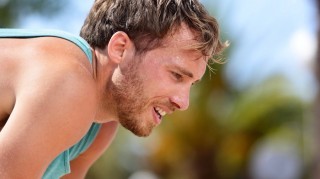
Photo: Shutterstock.com
Nearly every runner faces that critical moment in a race when the finish line seems too far away. Your legs are begging for a break or your lungs are on fire and the mind starts to make deals with the body. Quitting suddenly enters into the lexicon. At this critical juncture, a runner can either press on or pull off to the side of the course and settle with that dreaded DNF [Did Not Finish] next to their name. Admittedly, there are times when quitting can be the right answer, such as instances of major injury or illness. But let’s face it, there are also many times when there’s no good reason to bail in the middle of a race, even if the thought of stopping sounds appealing.
RELATED: 3 Tips For Overcoming A Bad Race or Workout
Use these three tips next time things aren’t going well and you’re tempted to press the eject button:
1. Take a 30-second time out.
When we aren’t feeling well in a race, we tend to panic and usually start slowing down or walking while trying to find a good excuse to quit. Most runners face these demons at some point of their racing career. Next time you’re thinking of tearing off your bib, take 30 seconds to think about your race and remind yourself of a few things.
Tina Muir, a coach with Runners Connect, says to think about the struggle. “Races are meant to be tough, but the more struggles and moments of doubt we overcome during the race, the better we are going to feel as we cross the finish line,” she says. “If you had a bad race, and you struggled your way through, you are going to feel proud of yourself at the finish as you know you did not give in.” Ewen North, head coach at Revolution Running, suggests having a blunt conversation with yourself during this short time out. “Tell yourself, ‘This race will not beat me. I am tough and will finish,’” he says. If possible, take the 30-second break at an aid station where you can talk to someone and get encouragement. Also, take in some water or fuel. A few calories can make a huge difference in boosting your morale.
2. Break the distance to go into doable segments.
When you’re fatigued, it’s easier to break the race into smaller chunks rather than thinking about the entire distance. Tell yourself to take things one mile at time—or even one step at a time if the going has gotten really rough. North says it’s a good idea to adopt this approach from the start of the race. Each milestone you pass is a small “finish line” of sorts. Achieving a bunch of little victories can change your morale along the way.
3. Avoid developing bad habits.
If you drop out of a race just because things aren’t going well, there’s an increased likelihood that DNF’ing becomes your go-to strategy every time you run into a rough patch—and that’s not a good thing. Face your fears in these moments of doubt and keep moving forward even if you’re slowing down. “Those moments not only make you stronger, but they help you appreciate when things are going right in the next race,” says Muir. “Once you drop out once, it becomes easier to do it again. Just think of the finish line and how good it is going to feel when you know you beat that mental demon telling you to stop.” North encourages runners who are thinking about DNFing to use the negative moment for good. “Keep it in perspective,” he says. “There will be other races and chalk a bad run up to experience and learn from it.”
RELATED: 5 Race-Day Dont’s For Runners
The post Three Tips For Avoiding A DNF On Race Day appeared first on Competitor.com.
5 Last-Minute Tips for Running the New York City Marathon
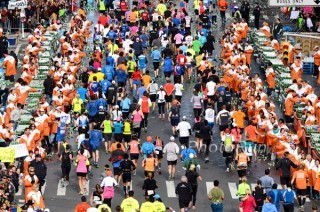
Running the New York City Marathon ranks as one of the top 10 experiences in my life. Besides all of the usual excitement around a marathon, the New York City Marathon has a special energy due to the route exploring all five boroughs of this diverse city.
Sunday will be here in a flash. Whether this is your first or your back for a repeat, here are five race-specific tips that will help ensure you have a fun, safe race.
Bring a sleeping bag and extra clothes to the start.
Imagine corralling 50,000 people. This takes time. This is time that you will be possibly cold and doing mostly nothing. Slip into the sleeping bag and mediate, relax, or sleep. Bonus: Historically, volunteers give the sleeping bags and clothes left at the start to those in need. The runners donated 26 tons of clothes in 2013.
Plan your exit from the finish.
There are over 50,000 cabs in New York City and every one of them is busy that morning. It’s possible to catch one with a walk away from the park, but don’t count on it. What is your back up plan? I was lucky enough to have a friend who lived seven blocks from the park. Maybe your hotel is close enough to walk? Or maybe you bum some ice from a café and elevate your legs for a while and wait it out. Sooner than later you need to get into bed and rest.
Put your name on the front of your shirt.
Ever wonder how it must feel to be an Olympic runner with everyone cheering you on? The closest many of us will ever get is the New York City Marathon. The city embraces this race with millions of spectators. Put your name large enough to read on the front of your shirt and entire neighborhoods will cheer for you. The crowds are 6-7 people deep and many just yell the name they can hear from the front row. It’s quite fun!
Study some New York City history before you go.
You still have time to do some reading or watch a film like American Experience: New York: A Documentary Film by Ric Burns. You’re running through an entire city with one of the most interesting, diverse, and complex histories in the U.S. Knowing a little about how it became what it is today will just enhance your moment-to-moment appreciation of all the sights, smells and sounds of New York.
Look out for celebrity runners.
Every year a number of high-profile celebrities run the New York City Marathon. While you’re unlikely to “run” into a celebrity, it’s fun to share a race with them. In 2007, I ran the race with Katie Holmes and Lance Armstrong. Since then, Edward Norton, Ryan Reynolds and Sean “Diddy” Combs among others have toed up the the Staten Island start line. This year, Alicia Keys, Ethan Hawke and others are planning to run.
Now you are ready to get out there on Nov. 1. Prepare for one of the top 10 experiences of your life and enjoy every minute of it!
* * *
About the Author: Eric Schweitzer, DPT, OCS—a board-certified Doctor of Physical Therapy, author, professor, runner and triathlete—has practiced physical therapy for more than 15 years. He runs a successful physical therapy practice, Premier Physical Therapy, located in Clearwater, Florida; a running performance studio called Premier Run & Fit inside the St. Pete Running Company; and is the founder of IdealRun, a personalized online running gait analysis. Dr. Schweitzer is an expert in running science and has long seen patients with running injuries or pain. He is truly a pioneer in the area of running science, creating a system of gait analyses and recommended drills and exercises that have given his patients the ability to continue running, prevent future injury and enhance their running. Through IdealRun, he has been able to offer this analysis to athletes across the country. Find more at: www.IdealRun.com & www.PremierRunFit.com Twitter: @RunTampaBay Facebook: www.facebook.com/idealRun
The post 5 Last-Minute Tips for Running the New York City Marathon appeared first on Competitor.com.
A Recovering Alcoholic’s Journey to the New York City Marathon
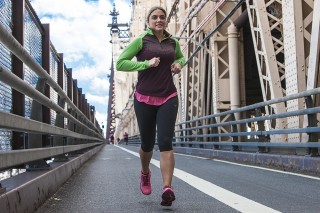
Carley Houser hopes to bring more awareness to homelessness and addiction by running this year's NYC Marathon for the first time and representing the nonprofit Back On My Feet. Photo: Courtesy of Mizuno
If you told Carley Houser five years ago that she would be lining up with 50,000 other runners at the start line of the 2015 New York City Marathon to raise money for a charity, she wouldn’t have believed you. That’s because Carley Houser of five years ago is not the same Carley Houser of today. Running became her life-saving catalyst for change.
Five years ago, the native of Orange County, Calif., moved to the Big Apple to follow a long-distance relationship that did not pan out as planned. Houser, then 24, continued to situate her new life in the city, but the adjustment was not an easy transition.
Having been predisposed to alcoholism and addiction throughout her life, Houser’s drinking became noticeably more problematic after she moved.
“I hated my life,” Houser says of her dark days. “I was just existing, I wasn’t living a life. I was doing the same thing everyday and had no self-care whatsoever. It got to a point where things got really scary. Things that used to be funny—like falling down—were not so funny anymore.”
On the morning of Sept. 11, 2012, Houser woke up in an unknown place with blood covering her face. “That was the morning I woke up and I couldn’t recognize myself anymore in the mirror,” she recalls. “That’s when I decided I needed help—this was a life I couldn’t see myself living, otherwise it was going to kill me if I didn’t get help.”
Since that morning Houser has been three years sober thanks to a successful recovery program and later, an inexplicable, newfound love for running.
It wasn’t until January of 2014 though, that Houser actually started running. She had woken up the day after her birthday, sober but still unhappy with her life. Then she randomly Googled, “how do I become a runner,” which motivated her to join a gym and buy workout clothes for the first time.
“I wrote down this little cheat sheet that I took to the gym and basically started off running one minute, walking one minute and repeating that five times,” she says. “I still remember running that one minute and thinking it was the longest one minute of my life and I could not imagine running any more than that.”
Houser, now 29 and a manager/bartender at Mudville Restaurant & Taphouse, says she’s not entirely sure why she chose running. All she knows is that it’s working. She went from running on and off a minute to moving her runs outdoors and completing 3 miles along the Hudson River to finishing her first NYRR 4-mile race in Central Park that spring. Even her job as a bartender doesn’t pose a risk for relapse because of her confidence in the powers of running and how “spiritually fit” she says it makes her feel.
“Running not only helped me stay sober, it clears my mind mentally,” she says. “And that ties into my sobriety because when I’m out there running, whether it’s a good or bad run, if I set my mind to it then I can do it. If I can stay sober, I can run a marathon.”
And that’s exactly what Houser set out to do: Run 26.2 miles for the first time.
The idea came to her after going on several runs with Back On My Feet, a nonprofit that motivates people experiencing homelessness to get their lives back on track through running. The run group and their various but similar stories inspired Houser so much that she called up executive director Terence Gerchberg about running this year’s New York City Marathon for Back On My Feet.
So far, Houser has raised $3,000 according to her fundraiser page on the New York Road Runners website.
Although the fundraising part of her marathon endeavors has been relatively painless, the same cannot be said for her training. Initially, Houser started her 16-week training program in July. After four weeks of solid runs, she injured her right hip flexor and took a four-week break. She had to start over, cutting her training down to 8 weeks left before race day.
“Now I have zero pain and that’s all a part of running, the recovery part of it,” says Houser, who has run seven half marathons since she started running almost two years ago. “To go from running five to six days a week to nothing was really scary. But I cross-trained, did yoga, lifted weights, swam, I tried to do other things besides running.”
With less than a week remaining until race day on Nov. 1, Houser says she’d be happy with running anywhere between a 4:15 and 4:30. But she prefers to not put too much pressure on herself and simply enjoy the course.
Houser will not only be running for Back On My Feet, but she will also be one of five New York City residents with inspiring running stories to represent Mizuno’s Team Inspire. She says she’ll be wearing a Mizuno tech shirt with Back On My Feet printed on the back and her full name on the front so people can cheer her on.
“If you would have asked me four years ago where my life would be, this is not where I thought it would be,” Houser says. “To be a part of Back On My Feet, to help other people just like me, to run a marathon, to run the NYC Marathon—I can’t even say it’s a dream come true because I never knew it was going to be a dream I was going to have. “
The post A Recovering Alcoholic’s Journey to the New York City Marathon appeared first on Competitor.com.
October 26, 2015
5 Ways To Support Your Ultrarunner
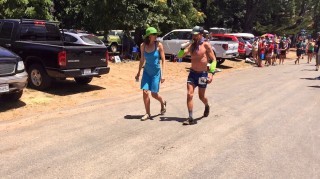
Rob Krar receives support from his wife, Christina Bauer, on his way to winning his second straight Western States Endurance Run. Photo: Mario Fraioli
Ultramarathoners can be a needy bunch on a race day. Let’s face it: tired people in the middle of intense physical and mental exertion aren’t always the most rational beings when it comes time to make important decisions, such as eating and drinking, or deciding whether or not they should keep going.
That’s where having a good crew on your side can come in handy. A supportive crew can be a critical component to good decision making on race day and can help increase the chances of a positive ultramarathon experience. Being a crew member requires having a thick skin and selfless devotion, so if you get the call from your ultrarunning friend or family member to help them out on race day, here are five things you can do to lend support:
1. Interview them before the race.
A week before race day, sit down with your runner and learn what they expect of you. There’s nothing worse than having the person you are assisting arrive at an aid station expecting something from you that you didn’t bring. Create a pre-race checklist together, says Meghan Hicks, the 2013 winner of the grueling Marathon des Sables and a senior editor at iRunFar.com. Hicks suggests preparing a list of questions that you should ask in this interview, such as:
—How do they want their gear laid out?
—Do they want you to ask certain cue questions or will they arrive and tell you their needs?
—Will they want a change of shoes? If so, where?
—What kinds of food do they want?
—What drinks do they want and where?
—Will they change their clothes?
—Do they need more layers?
—When will they need a headlamp?
—Do they like ice in their packs or bottles?
The more thorough you are in this interview, the better prepared you will be for any situation you might face on race day.
2. Pack some emotional support.
Hicks suggests asking your runner before the race how you can best help them emotionally. “Find out from them how they like to be emotionally addressed in the throes of a long race,” she says. “Do they like tough love? Abundant kindness? Emotion-free directness or something else?” Hicks also recommends being attuned to how your runner is feeling when they come to you. “Kindness goes a long, long way in the depths of a long ultramarathon,” she says. “Running so many miles is difficult, the terrain is challenging, a runner’s body might be responding roughly to the rigors of the race. When everything feels hard, soft emotions go a long way.”
3. Take care of yourself.
When you’re so consumed with taking care of someone else, it’s easy to fall into the trap of ignoring your own needs. You can best support your ultrarunner by keeping yourself hydrated, fed and warm. Jenny Jurek, who recently crewed for her husband Scott Jurek when he set the Appalachian Trail speed record, spent 46 days crewing him over the course of 2,200 miles. “Bring lots of food and snacks for you to eat throughout the day and night,” she suggests. Hicks concurs, saying, “Crewing often involves standing out in the elements, little to no sleep, driving to strange places, and more. When you pack crew gear, make sure to pack the food, drink, clothing, chairs, headlamps, and other gear you need.”
4. Be flexible and embrace the chaos.
Stay as calm as possible and be prepared to make changes on the fly. Ultramarathons can be chaotic affairs and your runner needs you to stay calm and be flexible. “Don’t let on that you’re stressed or irritated. You can vent after the race,” says Jurek. “Your runner needs to focus on his/herself for the time being.” Hicks cautions preparing yourself for all sorts of eventualities. “You’ll get temporarily lost,” she says. “You’ll get a flat tire driving on a dirt road. You’ll forget something your runner wants back at the car. Your runner will show up sick and vomiting. Your runner will show up wet and cold. You’ll become so sleepy it’ll be hard to keep your eyes open. The crew who best adapts to changing needs will be the most successful.”
5. Remember: You work for them.
Know what you’re getting yourself into before committing to help your friend or family member during their ultramarathon. You work for them. The last thing you want is for your runner to feel helpless when they need it most. Emotions can be all over the place, especially late in the race, so be sure you’re ready to deal with whatever gets thrown at you. “Make sure you really like that person!” says Jurek. “It’s going to be a long day of putting your runner first. It’s a lot of sacrifice and waiting around. So just be sure you’re committed to helping them have the best day possible and know that you are making all the difference!”
The post 5 Ways To Support Your Ultrarunner appeared first on Competitor.com.
Man Arrested After Cheating to 2nd Place at Nairobi Marathon

Photo: www.shutterstock.com
Julius Njogu, a 28-year-old Kenyan runner who apparently finished second at the Nairobi Marathon on Sunday, is in some hot water now. Turns out, he allegedly didn’t even run a mile.
The Associated Press reports that Njogu was arrested and will face fraud charges for his attempt, which would’ve netted him $7,000 in prize money.
TV cameras caught him arguing with event officials at the end of the race. He even took off his shoes in an apparent attempt to show organizers he had blisters from running the race.
“Officials said they became suspicious because Njogu showed no signs of fatigue and was not sweating when he had supposedly just run 42 kilometers (26 miles). They discovered that he’d run barely one kilometer after emerging from a bunch of onlookers and joining the leading group of runners just outside the stadium,” the AP reports.
Joshua Kipkorir won the race in 2:13:25, and Shadrack Kiptoo was in line to finish second before Njogu dashed past him close to the finish line.
“I followed the leading team from start to finish and I didn’t see him,” race director and Kenyan running legend Ibrahim Hussein, a three-time winner of the Boston Marathon, told the AP. “He will not be recognized and I’m so disappointed that one can cheat in this modern age. He didn’t finish second.”
Of course, cheating in marathons is nothing new. Rosie Ruiz famously claimed to have won the 1980 Boston Marathon before she was exposed, and back in the 1990s, twin brothers were disqualified from the Comrades Marathon after it was revealed that they were switching off.
MORE: The Associated Press
The post Man Arrested After Cheating to 2nd Place at Nairobi Marathon appeared first on Competitor.com.
Celebrities Running the 2015 New York City Marathon
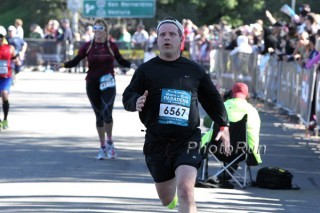
While the New York City Marathon is known for its enormous field (50,000-plus in recent years) including world-class elite runners leading the way, it also gets its share of public figures running each year. Past celebrities include Diddy, Will Ferrell, Teri Hatcher, Edward Norton, Pamela Anderson, Alanis Morisette and more.
RELATED: Competitor’s 2015 New York City Marathon Coverage
RELATED: More Celebrities Who Run
This year’s list of notable runners ranges from a Grammy-winning musician to an Oscar-winning actor to a few former professional athletes in other sports. Here’s a look at some of the names you’ll see in New York on Nov. 1:
Photo Gallery
1 of {count}
Back to Start
View Larger Image

Alicia Keys
The 34-year-old mother of two and acclaimed singer and actress is running her second marathon—but her first in New York, where she was born and raised. She is raising money for Keep a Child Alive, a nonprofit she co-founded which helps deliver HIV medication to African families in need.
View Larger Image

Ethan Hawke
The actor of such films as Training Day and Boyhood will run the marathon with his wife, Ryan, to raise money for The Doe Fund, which aims to develop programs that meet the needs of a diverse population working to break the cycles of homelessness, addiction, and criminal recidivism.
View Larger Image

Sean Astin
The actor from Lord of the Rings, Rudy and The Goonies, doubles as a longtime endurance athlete. Astin announced on Twitter that he was running the NYC Marathon while he was in Hawaii preparing for the Ironman World Championship. He finished Kona in 15:30:31, and three weeks later he plans to start in Staten Island. He's run 10 marathons, including Boston earlier this year.
View Larger Image
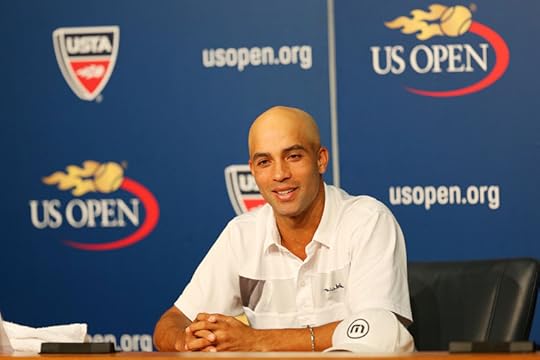
James Blake
The former professional tennis player retired in 2013, but he will keep his competitive juices flowing at the NYC Marathon. He's raising money for the James Blake Foundation, which helps fight cancer.
View Larger Image

Tiki Barber
The former NFL running back and current media personality is running New York City for the second straight year, after finishing in 5:14 last year. He's running for the PitCChIn Foundation.
View Larger Image

Katrina Bowden
The actress known for her roles in 30 Rock is running New York City for the second straight year to benefit the Leukemia and Lymphoma Society's Team in Training. She finished in 4:16 last year.
View Larger Image

Cat Greenleaf
Greenleaf is the host of the Emmy-winning Talk Stoop on NBC, where she interviews celebrities from the front step of her Brooklyn brownstone.
View Larger Image

Daniel Humm
The award-winning chef and co-owner of Eleven Madison Park and The NoMad restaurants in New York City, Humm will be running his second New York City Marathon. He finished in 2:51 in 2008.
View Larger Image

Gary Williams
The Golf Channel host is running New York City for the second straight year. He finished in 4:46 last year.
Related Galleries

Sneak Peek: Special-Edition Shoes for the 2015 New York City Marathon

More Galleries
The post Celebrities Running the 2015 New York City Marathon appeared first on Competitor.com.
‘Psyching Team’ Provides Mental Boost to NYC Marathon Runners

Sometimes even the huge cheering crowds aren’t enough to boost the spirit of a struggling competitor in the New York City Marathon.
That’s when Dr. Ethan Gologor’s Psyching Team comes in.
Scattered throughout the 5-borough course on Nov. 1, about 50 mental health professionals will encourage and console individual runners during their toughest moments.
“Running 26.2 miles is not just about the legs, lungs and heart, but also the head,” says Gologor, the team’s captain since 2003 and a NYC Marathon finisher. Gologor is also chair of the psychology department at Medgar Evers College in Brooklyn.
Whether there’s a veteran runner battling pain or illness or a rookie marathoner dealing with self-doubt, Gologor’s team is prepared to jump in with a pep talk. Many ride the shuttle buses to the start and coach jittery runners before the race.
“Don’t try to get rid of all your anxiety,” Gologor says of one piece of advice he gives. “A little bit of anxiety actually motivates you more, but you don’t want to be overwhelmed.”
The Psyching Team, which was formed in the 1980s, is there “to enhance (runners’) marathon experience and help them achieve their goals,” says Emily Gallagher, a spokesperson for New York Road Runners.
These volunteers are required to attend a general orientation and then a specialized one for the Psyching Team, she says.
Though the team isn’t new to the New York City Marathon, Gologor acknowledges that many runners aren’t aware of it.
On race day, members will have a few signs and wear the same jackets as the medical crew.
“We keep a pretty low profile,” he says. “We just want to help the runners.”
The New York City Marathon isn’t the only running event that provides mental and emotional support.
The Toronto Marathon and Columbus Marathon and Half Marathon, for example, also have mental health professionals on hand. In addition to helping runners on race day, these volunteers offer mental preparation tips at the marathon expos.
Jennifer Lipack, a licensed social worker, had to postpone her New York City Marathon entry, so she joined the Psyching Team as a way to still participate.
The 34-year-old from Long Island knows all about the disappointment many runners face. She had secured a spot in the marathon, but chronic asthma and sinus problems have forced her to sit it out.
She hopes to get stationed near the end of the course, where she thinks runners will need the most support.
“If you have three miles left and you can’t finish for whatever reason, that’s the worst,” Lipack says. “This is a major marathon—the emotion to compete or achieve your goal is extremely high. To get into this marathon is very hard. You can’t always say, ‘There’s always next year.’”
When a runner falls short of a goal, it’s important to encourage that person to focus on the positives, she says.
“Remind them of the bigger picture,” she says. “They are present, and they were able to be part of it.”
RELATED: How ‘Perception of Effort’ Can Make or Break a Race
First-time participant Melissa Gibilaro, 35, says her biggest worry is not the final miles, but the start of the race across the Verrazano Bridge from Staten Island to Brooklyn.
“I am nervous about mile one,” says the Staten Island resident. “Knowing that bridge is uphill for the first mile—that’s daunting to me.”
It’s comforting to know the Psyching Team will be on the course, Gibilaro says.
“During training when you have those long runs, your mind goes to deep, dark places. That’s bound to happen, too, during the race,” she says. “If there are people intentionally there keeping an eye out for runners to take you out of that place, that’s good. There are so many unknowns going into it.”
But the team is not just about lifting runners from dark moments — it’s also about reminding them to enjoy the experience.
“When they are lining up, we try to get to the front of the corrals on the (Verrazano) bridge and just give them some cheerleading,” Gologor says. “They appreciate it.”
RELATED: Competitor’s New York City Marathon Coverage
The post ‘Psyching Team’ Provides Mental Boost to NYC Marathon Runners appeared first on Competitor.com.
Meb Keflezighi on Why He Loves Compression Socks

You never see Meb Keflezighi racing without compression socks. They are a staple of his race-day gear, and in this video, he explains why.
Shop CEP Compression socks .
The post Meb Keflezighi on Why He Loves Compression Socks appeared first on Competitor.com.
October 25, 2015
Photos: 2015 Frankfurt Marathon

An IAAF Gold Label Road Race, the Frankfurt Marathon took place this weekend in Germany. The finish line inside Frankfurt’s Festhalle was the site of plenty of drama—Ethiopia’s Sisay Lemma held off two Kenyan rivals to win in 2:06:26, though the bigger cheers were reserved for Germany’s own Arne Gabius. That’s because his time of 2:08:33 broke the 27-year-old German record, and is the fastest marathon by a European this year.
The women’s race was won by Ethiopia’s Gulume Tollesa in 2:23:12 in a sprint finish, beating Dinkinesh Mekash by a nose.
Here are photos from the race, taken by PhotoRun.net:
Photo Gallery
1 of {count}
Back to Start
View Larger Image

2015 Frankfurt Marathon
View Larger Image

2015 Frankfurt Marathon
Arne Gabius
View Larger Image

2015 Frankfurt Marathon
Lisa Hahner
View Larger Image
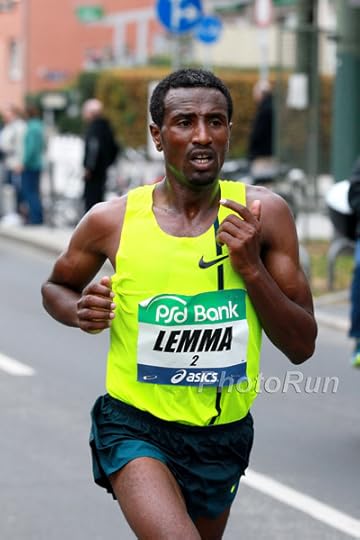
2015 Frankfurt Marathon
Sisay Lemma of Ethiopia, the eventual winner in a thrilling race.
View Larger Image
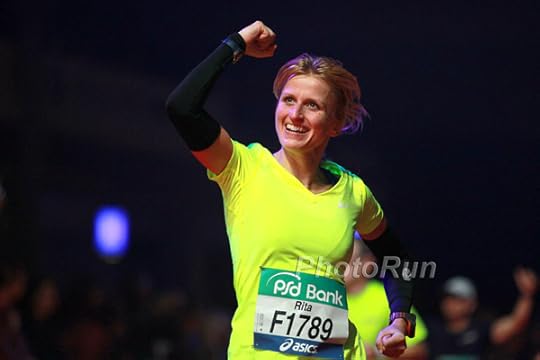
2015 Frankfurt Marathon
View Larger Image

2015 Frankfurt Marathon
Gulume Tollesa
View Larger Image

2015 Frankfurt Marathon
Andrea Mayr
View Larger Image

2015 Frankfurt Marathon
The indoor finish.
View Larger Image

2015 Frankfurt Marathon
View Larger Image

2015 Frankfurt Marathon
Lemma won the race in 2:06:26.
View Larger Image

2015 Frankfurt Marathon
Arne Gabius broke a 27-year-old German record in the marathon with a 2:08:33 showing.
View Larger Image
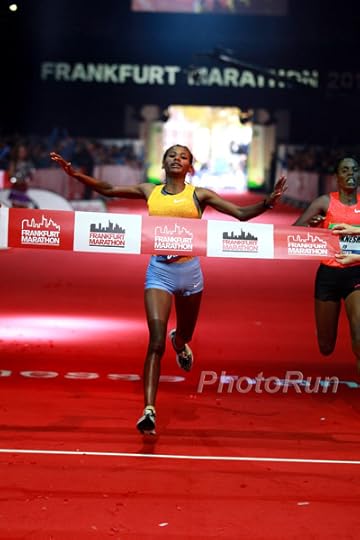
2015 Frankfurt Marathon
Gulume Tollesa of Ethiopia won the women's race in 2:23:12, a PR by more than six minutes.
View Larger Image
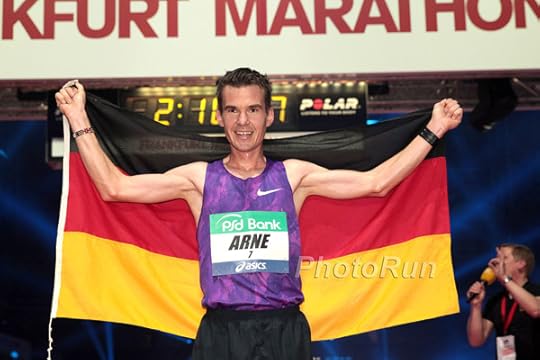
2015 Frankfurt Marathon
Arne Gabius, the new German record holder in the marathon.
Related Galleries

Photos: 2015 Rock ‘n’ Roll Los Angeles Half Marathon
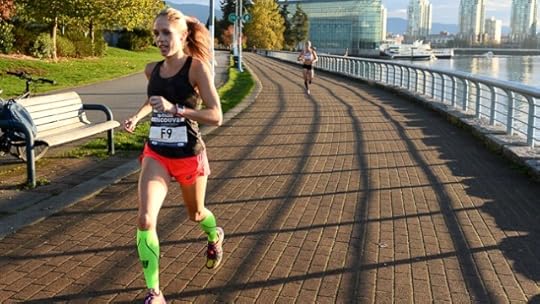
Photos: 2015 Rock ‘n’ Roll Oasis Vancouver Half Marathon

Photos: 45th Annual Cunningham Seawall 10K

Photos: 2015 Toronto Waterfront Marathon

More Galleries
The post Photos: 2015 Frankfurt Marathon appeared first on Competitor.com.
Re-Energized Mary Cain Explains Move Back East

Cain finished third at the Mayor's Cup cross-country meet in Boston on Sunday. Photo: Chris Lotsbom | Race Results Weekly
(c) 2015 Race Results Weekly, all rights reserved. Used with permission.
BOSTON — Signing autographs and posing for pictures, Mary Cain smiles non-stop. She wears the same grin that was seen week-in and week-out in 2014 when she took the American track scene by storm and claimed a gold medal at the IAAF World Junior Championships. At the Boston Mayor’s Cup Cross Country meet on Sunday, hosted by the Boston Athletic Association and USATF New England, Cain savored the relaxed and fun atmosphere.
The Mary Cain here today is visibly upbeat, a somewhat changed 19-year-old. She’s a far cry from the young woman who walked off the track dejected after an eighth place finish at this year’s USA Track & Field Championships in June.
This Mary Cain is giddy and wears a bright orange ribbon in her hair. She’s re-energized and ready to build off her 16:46, third place 5K finish today.
“I’m not the down Mary Cain in interviews any more!” she exclaimed with glee and a chuckle, moments after a recorded interview with Race Results Weekly came to an end. “I’m super happy!”
RELATED: Generation Next—America’s Fastest Young Runners
Speaking one-on-one with RRW for close to ten minutes as rain began to fall, Cain described her new outlook on running. Since moving back to her family home in Bronxville, N.Y., earlier this year, she feels a new sense of energy.
With the move East, Cain has gone back to the basics, focusing on why she fell in love with running in the first place. She’s going back to the things that made her arguably the top prep runner in American history, and a feared athlete on the track globally.
Cain still wears the black-skulled Nike Oregon Project kit with pride, perhaps more pride than ever before. Some media members and fans had wondered if Cain and coach Alberto Salazar were growing apart after a tough 2015 track season, culminating with her move back to Bronxville.
On the contrary, Cain said she has confidence in Salazar and still talks to him daily, relying on him for workouts and advice. The only change—really—is being thousands of miles apart, she said.
While Cain released a blog entry earlier this month that touched upon the move, she had not previously gone into depth regarding the topic. Today, Cain opened up to Race Results Weekly, providing context on the transition.
“I think a lot of it has been going ‘back to basics’ as my mom says. A lot of it is quality workouts and quality running [now],” Cain began. “I think last year I really got caught in the ‘I’m running against 30-year-olds, I have to look like a 30-year-old on the track’ [mentality]. So I’d be doing crazy tempos, crazy mileage, crazy cross-training, and I would get into running and by the time I’m doing the actual sport that I do, I felt really awful, really crappy. You could see it in my results.”
After moving to Portland and attending the University of Portland, Cain ramped up her training. She’d routinely make 30 minute drives from the college campus to the Nike campus for track workouts.
While living in Portland had its many benefits—including the superior facilities, personal training under Salazar, and more—it did come with apparent drawbacks. From today’s conversation, Cain sounded like she was a bit stressed in Oregon, and put a lot of pressure on herself.
The move back to Bronxville was a step back, a forward-thinking move to get back to what worked best; what helped her set personal bests of 1:59.51 for 800 meters and 4:04.62 for 1500 meters on the track.
“Part of the reason I moved home is because this [meaning 2016] isn’t really the year to mess up again. In a way I knew this was a system that works, and we’re all really comfortable and confident with it, and I’m just happy to be back,” she said. “I think one of the biggest things for me is just having fun with again, seeing all these kids [looking at the children around her]. When I was out in Portland there was a lot of really great things about it. But being home, I’m a New Yorker and I think I’ve really enjoyed being back out here.”
If a title was necessary, Cain’s move could be called “Back To The Future.” She’s returning to Bronxville and her past while hoping for future success. She’s reverting to the training system that she was most comfortable with.
“This year, it’s just been about the running,” she said. “I’ll do my core, I’ll do my strength training, I’ll do my occasional cross-training if I need it. But it’s really about going through the motions of running and I think that’s made it more fun again for me. I came into this sport because I love to run. And I’m back home with my parents who help me out.”
Cain rattled off names who have been supportive and key to her career: Salazar; her parents Charles and Mary; her sisters Aine, Catherine, and Mairead; and Olympian John Henwood, who oversees her training in Bronxville and was on hand today.
“In a lot of ways its just what I did junior and senior year of high school. Alberto is 3,000 miles away but we still have got the phone and technology like we did two years ago. We’re on the phone all the time. I think it’s kind of nice to almost bring it back to what kind of got me into the sport in the first place,” she said. “Alberto and I developed a relationship kind of how we are working together right now, so it feels like how it used to be. It hasn’t really changed at all.”
“In a way I think our relationship is probably even better now because I’m not the crazy college kid now!” Cain continued. She noted specifically frantic calls from Portland traffic jams, and other stresses trying to juggle academic and athletic excellence while being currently enrolled at Fordham University.
Sunday’s Boston Mayor’s Cup Cross Country meet was another step forward to what Cain hopes is a successful 2016, culminating with a trip to Rio de Janeiro and the Olympic Games. She does not know when her next race will be, but hinted at a return to New York’s Van Cortlandt Park for another cross country event. She will run an indoor track season, and is eager to lace up the spikes again soon.
“For October 25, I know I’m in pretty good shape. I’ve never been in this kind of shape this early, so I’m pretty excited about that!” she said.
With the success that Cain has achieved prior to her 20th birthday comes a lot of pressure and expectations, both internal and external. During the better part of 2015, Cain was troubled by the lack of progress and success she had become accustomed to in 2014.
Now, going into 2016, she’s refocused. She’s in a more comfortable setting, and is ready for more.
“In a lot of ways right now is just getting back into racing because last year really wasn’t that good,” she said, speaking directly into a video camera and sounding like a mature, focused adult. “It’s about being able to get to the line, go through the pre-race jitters, get a good effort in. But really get ready for indoor [track]. I’m excited for this indoors. I feel like I’m back on track—no pun intended.”
The post Re-Energized Mary Cain Explains Move Back East appeared first on Competitor.com.
Ryan Hall's Blog
- Ryan Hall's profile
- 21 followers



